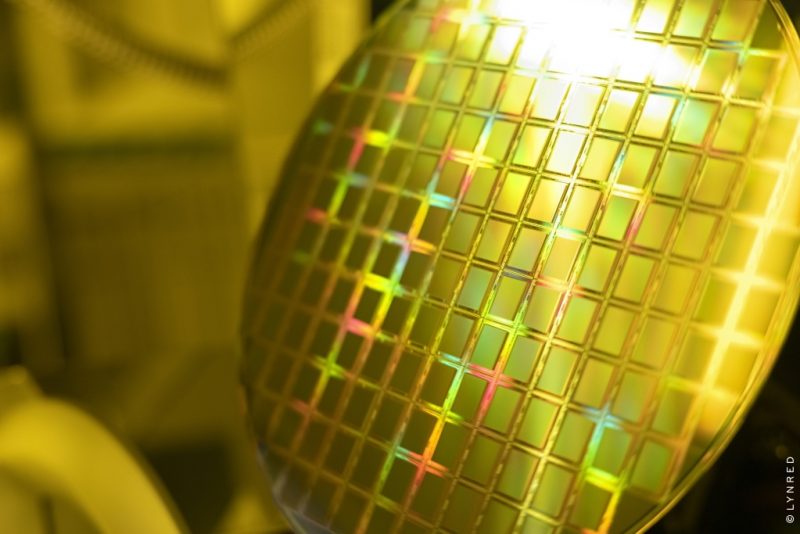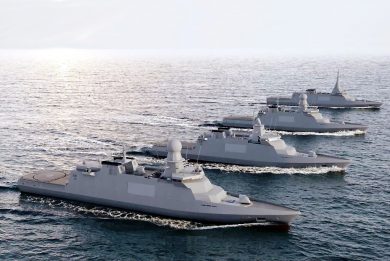Lynred leads HEROIC, an EDF-funded programme to improve IR detectors
To improve IR detectors quality, reduce power consumption and cooling needs, and increase detection ranges, in the last few years focal plane arrays (FPAs) used as sensors in thermal imagers started to evolve, the most visible changing being the pixels size reduction.
To cope with this evolution and exploit breakthrough in the FPA field, a superior CMOS technology compatible with those new advanced infrared (IR) detectors is needed. Not only, Europe also has to gain technological sovereignty in high-performance IR sensors, as well as consolidate the supply chain in this strategic area, becoming independent from providers from other continents.
Among 2021 European Defence Fund (EDF) programmes that were selected we find HEROIC, for High Efficiency Read-Out Integrated Circuit. It falls in the Optronics and radars category, the EDF document describes it as follows: “The project ‘High Efficiency Read Out Circuits’ (HEROIC) will enable European IR sensor suppliers to sustainably design the next generation of EU Read-Out Integrated Circuit (ROIC) for IR sensors for defence applications. A ROIC provides the electrical interface between each individual detector pixel and its associated readout circuit. HEROIC will improve the securing of the availability of a common advanced fully EU ROIC supply chain compatible with various IR detector technologies and 2D/3D architectures.”
Aimed at generating knowledge and studies, HEROIC will last 48 months and will be worth €
19,081,739.78, maximum contribution by the European Union being € 17,999,998.00 according to EDF documents.
The programme involves 10 European companies led by Lynred of France, specialised in designing and manufacturing infrared detectors for worldwide markets. Based near Grenoble, the company was established in June 2019, but leverages the experience of over 30 years of Sofradir and ULIS, the two companies who merged to give birth to the new entity. Two other IR seekers manufacturers are part of the group of companies involved in HEROIC, AIM of Germany and Xenics of Belgium, together with four system integrators, Indra from Spain, Miltech Hellas from Greece, Kongsberg from Norway and PCO S.A. from Poland, one integrated circuit developer, Ideas of Norway, and two research institutions CEA-Leti from France and the University of Seville from Spain (for more information on those entities please refer to the PRESS RELEASE).
“The aim is to develop a !very small CMOS, with low noise and requiring low power,” David Billon-Lanfrey, Lynred chief strategy officer told EDR On-Line in an interview that followed closely the issue of the press release, “to allow developing in-house a next generation ROIC.”
The first year of the programme will be mostly dedicated to select a European semiconductor foundry. Around five such facilities are present on the Old Continent, the Lynred representative explaining that it will be key to adapt to the foundry requirements, as military-grade components will be a fraction of the volume a foundry produces for the commercial market. The selected foundry will then become the subcontractor of choice once production will start, the process of choosing the right one being based on a standard commercial offer.
“One of the key issues in CMOS used for IR detectors is that they must work at very low temperatures,” Mr. Billon-Lanfrey states adding that the new CMOS will be able to work with detectors in all IR bands, Short Wave Infrared (SWIR), Medium Wave Infrared (MWIR) and Long Wave Infrared (LWIR). Cooled LWIR detectors are currently the most critical in terms of temperature, as they work around 80-90°K, while MWIR ones are becoming less critical since the HOT (High Operating Temperature) technology increased temperature to 110-150°K from the previous 77°K, SWIR needing some cooling only when dealing with E-SWIR, the first letter standing for ‘extended’, which brings the band from 0.9-1.7 µm up to 2-2.5 µm and operate at around 200°K.
Year one of the project will also see the development of design tools by the HEROIC team, before switching to the core of the programme. The true design work will then start, bringing to the development of a technology base that will be shared among HEROIC team members and will therefore bring to more than one product, in fact the number of CMOS produced will be at least three, that of participating IR detector manufacturing companies. “We will however develop a single input/output standard to allow customers to develop the same interface for the different products,” David Billon-Lanfrey underlined.
He also added that the new CMOS will be pivotal in the development of sensors that will exploit edge-computing technology to add more intelligence into the focal plane, something that should allow to increase processing time moving it into the sensor itself, EDR On-Line understood.
Photo courtesy Lynred




